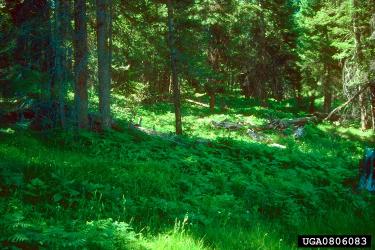Fire Regime 3: What You Should Be Doing
Fire Regime 3 forests are beautiful, but they can be dangerous places to live. Fire suppression has allowed these productive forests to grow into continuous, dense vegetation, and their dry, warm climate means that fire could return anytime, burning through the canopy and destroying everything in its path.
It is important to maintain the patchy historical character of the Fire Regime 3 forest, either through tree cutting, prescribed burns, or both. If your forest has retained its patchy structure, it can be maintained using fire, but if past logging and fire exclusion has produced a dense stand, you will need to cut trees to re-create a patchy structure. New methods can help determine which trees to cut (see The ICO Approach to Quantifying and Restoring Forest Spatial Pattern to learn more). Whether you use fire or harvesting, make sure you work with a trained professional.
Knowing your fire regime may be more important in Fire Regime 3 than in any other forest because it is easy to be “tricked” by forest conditions here. Forests in Fire Regime 3 are the most altered by past management and often take on a complex “old growth” appearance in the absence of fire. Knowing you are in Fire Regime 3 keeps you from being fooled into thinking you are in a wetter, safer place and allows you to prepare your forest to take advantage of fire when it does arrive.
How can I get more tips?
It’s simple! Enter your email below.

